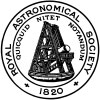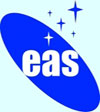Star formation: from massive stars to brown dwarfs
Principal contact: D. Barrado (barrado@laeff.inta.es )
Organisers: D. Barrado (LAEFF, Spain), P. Lucas (Hertfordshire, UK)
In recent years, observational data has become available for the most obscured parts of star forming complexes, the Infrared Dark Clouds and dense cores and clumps. This allows us to relate the clump mass function to the stellar initial mass function and constrains the physics of the steps in between. At the same time, much progress has been made in imaging examples of high mass protostars in the near infrared, while at the low mass end, a new field has been unveiled.
During the last years a large population of brown dwarfs have been uncovered that includes warmer, younger members of young stellar associations. In fact, at early stages these objects exhibit characteristics which resemble those observed in Classical T Tauri stars, including accreting disks and jets. Transition disks, characterized by infrared excesses at longer wavelengths probably due to a large hole, and disks around planetary mass objects, have been also observed. However, only a handful of Class I (embedded objects with an envelope) brown dwarf candidates (a proto-brown dwarf, caught in the act of formation) has been identified.
This session aims to review progress in these areas and consider the prospects for further progress that are offered by the suite of new large Galactic survey datasets that are becoming available at wavelengths from the optical to the radio as well as the new opportunities provided by the launch of the Herschel Space Observatory. The goal is to review the current situation of this very active field of research and discuss the opportunities offered by all new ground-based and space instrumentations.
Scientific Programme
| Wednesday 22nd April | Surveys | |
| 11:00 | What is the Stellar Mass Function of Whole Galaxies? | Peter Anders |
| 11:20 | Finding all Massive Young Stellar Objects in the Galaxy: the RMS Survey | Rene Oudmaijer |
| 11:40 | Galaxy- Scale Star Formation with the Herschel Infrared Galactic Plane Survey | Sergio Molinari |
| 11:50 | Infrared Dark Cloud Cores in the SCUBA Legacy Catalogue | Harriet Parsons |
| 12:00 | A GMM-EM Algorithm to Search for Stellar Clusters in Large Databases | David Samuel |
| 12:10 | The Gould Belt JCMT Legacy Survey | Derek Ward-Thompson |
| 12:20 | High-Mass Star Formation with the JCMT and Herschel Galactic Plane Survey | Toby Moore |
| Wednesday 22nd April | High Mass - Low Mass | |
| 14:00 | Spectral Energy Distributions of Methanol Maser and 8GHz Continuum Sources in Regions of Massive Star Formation | Adam Avison |
| 14:10 | What Are Class II Methanol Masers Tracing? | Mark Gallaway |
| 14:20 | Spectro- Astrometry of Herbig Ae/Be Binary Systems | Hugh Wheelwright |
| 14:30 | Stellar Rotation at Young Ages: New Results from Corot's Monitoring of NGC 2264 | Fabio Favata |
| 14:50 | The Low-Mass Initial Mass Function in the Young Cluster NGC 6611 | Joanna Oliveira |
| 15:10 | Is the IMF universal? Latest results from the UKIDSS Galactic Clusters | Nicolas Lodieu |
| 15:20 | A Photoevaporating Proto-Brown Dwarf in Orion? | Philip Lucas |
| Wednesday 22nd April | Low Mass - Models and Data | |
| 16:00 | Three New Methane Dwarfs in the Star Forming Region IC 348 | Andrew Burgess |
| 16:10 | The Formation of Brown Dwarfs and Low-Mass Stars by Disc Fragmentation; Theory vs Observations | Dimitris Stamatellos |
| 16:30 | Star Formation Triggered by Expanding HII Regions | Anthony Whitworth |
| 16:40 | Constraining the Kinematics of Serpens North Cluster: Comparison between (Sub)Millimetre Observations and SPH Simulations | Ana Duarte Cabral |
| 17:00 | The Structure of Molecular Clouds | Jonathan Rowles |
| 17:10 | Are Pre-Main-Sequence Stars Older than we Thought? | Tim Naylor |
| Thursday 23rd April | Models and Data | |
| 11:00 | The Fragmentation of Expanding Shells | Jan Palous |
| 11:20 | Using Molecular Complexity as Diagnostics of the Physical Characteristics of Low and High Mass Star Formation | Serena Viti |
| 11:40 | Constraining Observables from Hydrodynamical Simulations of Prestellar Core Collapse | Stefanie Walch |
| 12:00 | Non-LTE Molecular Line Imaging of SPH Cluster Simulations | David Rundle |
| 12:10 | Discussion | |
Poster Presentations
- Modelling circumstellar discs with 3D radiation hydrodynamics - David Acreman
- A very extended area search for very low-mass stars and brown dwarfs in the Upper Scorpius association - Víctor Sánchez Béjar
- MAD observations of NGC 2362 - Nuria Huélamo
- Formation of elephant trunks in HII regions - Jonathan Mackey
- Young, very low-mass objetcs in the elephant trunk - Belén López Martí
- Searching for proto-brown dwarfs - Maria Morales-Calderón
- The RMS Survey: The luminosity function of massive YSOs in the Galactic plane - Joseph Mottram
- Different generations in the intermediate mass nascent cluster IRAS 00117+6412 - Aina Palau
- A UKIDSS-based search for very low-mass stars, brown dwarfs and planetary-mass objects in outer parts of young star-forming regions - Manuel Perger
- 2MASS J17112318-2724315: A low-mass protostellar system in the B59 molecular cloud - Basmah Riaz
- Photometric study of the FUor star V 1735 Cyg (Elias 1-12) - Konstantin Stavrev
- Galactic molecular clouds: Their place in the Galaxy - Lee Summers
- Simulated Observations of Planet Formation with MROI - John Young










